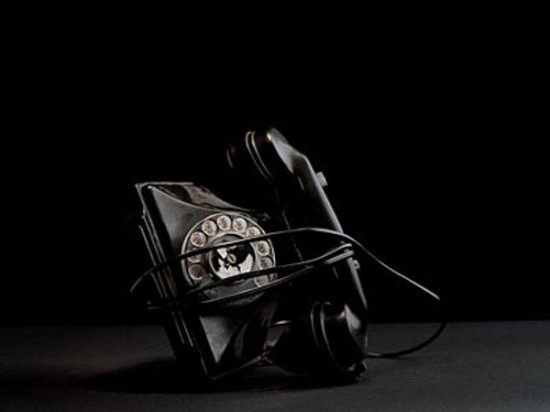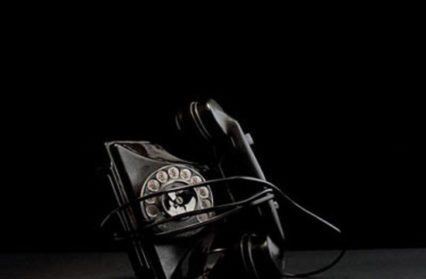Penny Simpson reviews a solo exhibition by Indrė Šerpytytė at ffotogallery, Penarth, which focuses on the Soviet occupation of Lithuania.
Breaking the silence around crimes against humanity is given extraordinary resonance in the photographs of Indrė Šerpytytė. The two bodies of work on display reflect on events that took place in Lithuania in the 20th century, primarily the Soviet occupation from 1944. Šerpytytė’s interrogation of the occupation of her home country is not ideologically driven; her approach is more nuanced, offering up a visual meditation on the intricate and complex issues that lie at the heart of a transitional state.

How are the events of the past memorialised in a place that has experienced decades of repression? What lies forgotten, and what can be retrieved? What boundaries are crossed in uncovering the truth, and how to give voice to such investigations? Šerpytytė begins with family history, taking the disputed facts surrounding the death of her father as a means to question more generally a bureaucratic regime that silences its opponents. Albinas Šerpytytė was Head of Government Security in a newly independent Lithuania. His death in 2001 remains unresolved. A State of Silence presents a series of colour photographs depicting a uniform cap, a pile of white shirts, a passport, an office dial telephone and a paper shredder. All the objects hint at a working regime of discipline and regularity, but a second look reveals the telephone is disconnected, and the papers, which are lined up in neat rows, are blank. It is testament to the absence of the missing, and a means to make that person visible once again. But there is no easy resolution. In this personal statement, Šerpytytė is also acknowledging the many other citizens of Lithuania who were killed or ‘disappeared’ in similarly unknowable circumstances. The past – even the recent past – is a blank piece of paper, an unworn uniform, a redundant piece of technology. What is intriguing is the means the photographer uses to inject into these objects a ‘history’ of a different kind – one built up from from the subtle shifts that take place between truth, secrecy and allusion.
The technique is developed in 1944 – 1991, a work which examines anti-Soviet resistance in Lithuania. There are two themes represented in the exhibition, one looking at the Forest Brothers, the Lithuanian partisans who fought against the Soviet regime after abandoning their homes to find sanctuary in the forests, and the other the secret prisons set up by the KGB, many of which were located in converted domestic dwellings. Their folkloric exteriors came to conceal hideous atrocities, something Šerpytytė embodies in a highly original manner through commissioning traditional hand-carved wooden models which she then photographs. The process begins with site visits and research in archives, also represented in the exhibition by framed pages from sketchbooks showing the original facades of the KGB prison-houses. For Forest Brothers, she focuses on large-scale colour photographs of forest sites where the partisans lived and died fighting for an independent Lithuania.
This interplay between on-site research, archive and interpretation lies at the heart of Šerpytytė’s interrogation of history; much has been lost to the past, and archives can be hard to access. What comes in its place is a recovery of place and personality through assessing traces that have been left behind, the crumbling gables of a gingerbread-stye house, or an abandoned cap. Juxtaposed with each other, these traces build into a story which doesn’t try to erase contradiction or ambiguity. Forest landscapes become sanctuaries; a home transforms into a site for extrajudicial killings. Borrowing from the symbolism of fairytales, Šerpytytė suggests a new means of interpreting historical events, one that doesn’t shy away from admitting grey areas, but accepts the porousness of a given situation and allows it to find its own point of balance, one that defies the rigidity of much political discourse. It is reminiscent of the approach taken by artists such as Poland’s Miroslaw Balka in his explorations into the history of the Holocaust. He explains his process in the following way: ‘One day at the end of the twentieth century I asked myself what I do for the ones who lived here and are gone. And I started my pilgrimages to the concentration and death camps… To collect their traces and take care.’
Indrė Šerpytytė is another collector of traces and creator of vicarious memorials, and, like Balka, she uses the specific to address general themes facing societies which have experienced gross violations of human rights. The traces she uncovers and elaborates in her series of photographs are eloquent testimony for the many who have been silenced. Most importantly, they provoke questions and allow for reflection and considered inquiry.
Indrė Šerpytytė at ffotogallery, Penarth
Exhibition runs until October 12, 2013.
Recommended for you:
Brian Royson Mayne explores the ways in which the visual arts have incorporated principles of the circular economy into their work.












